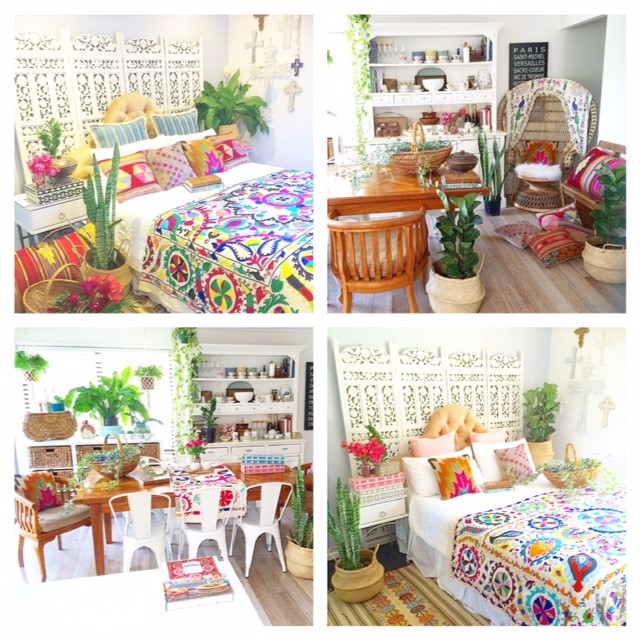
The Revival of House Plants – Modern Day Bohemia
In recent times, we’ve seen a revival of the indoor houseplant! Hooray!
Adding greenery to your home, is not by any means, a new concept, but for years, it has fallen by the wayside in lieu of optimising interior décor and furnishings and didn’t really play a role in the modern home, until now!
Plants are a beautiful way of adding life and light to any space in your home, along with purifying and cleaning the air, how on earth can we not embrace this movement?
Some (like me) cultivate an urban jungle within their surroundings, but for the novice, having and keeping plants alive and thriving may indeed, be a terrifying concept.
So here, I hope to address your fears, help you along your way and give you some hot tips for the care and longevity of your indoor plant life.
And may no home ever go ‘ungreen’ again!
Where do I put them?
- Prior to purchasing any house plants, find a light filled spot within your home, where you plan to have them. Most indoor plants do best with gentle all-day filtered light, in a warm spot.
- There are very few indoor plants that will survive in dark and dusty corners of the home, so to that end, feature them in the rooms that get the most light during the day.
Where do I buy them?
- Your local nursery - (if it’s anything like mine, it will become your go-to place of choice!)
- Bunnings/Masters - (they have a huge indoor and outdoor plant area to meander around and make your choices in quiet awe and wonderment)
- The Markets - (often your local markets will have a stall or seller who is there selling plants – it’s a cheap and lovely way to spend a weekend and come home with a bountiful carload of green pretties!)
- Roadside stalls – often when out on drives, you will see roadside sellers hawking plants! STOP! You may just find the splendid green goddess for your home that you’ve been dreaming of!)
How do I care for them?
When you buy plants from a store/your local nursery or even the markets, it will have a tag attached to the pot or stuck in the soil. Read it! Keep it! These are your care instructions. This little tag will tell you the botanical name of your chosen greenery, as well as what kind of conditions it prefers and how often you should water it. And whilst these tags are a ‘general guide’ DO NOT cast them aside, the tag is your best starting point and quick reference guide to having and maintaining a happy, healthy plant for years to come!
Hot Tips
DO NOT over water
Over watering is the number one killer of indoor plants. Most indoor plants DO NOT like having ‘wet feet’. Some are certainly more tolerant than others to having constant moist soil, but over time, you may find they don’t do so well inside your home. Take note of the care instructions on that little tag, as a general rule, most indoor plants do well with a good watering once a week.
- Indoor plants need drainage
So often people will purchase greenery and then rush out and re-pot it into a pretty ceramic or stone pot, with very few or no drainage holes at all! And whilst it may look aesthetically beautiful for a week or two, eventually that plant begins to show signs of a struggle and in spite of your best efforts to wrestle it back to life, you will instead, watch it suffer a slow, sad death. Why? Indoor plants need drainage, as mentioned above, very few varieties actually prefer having constant wet soil – so that good watering you’re giving it once a week, has nowhere to go, it pools in the pot and before it has a chance to dry out, another weekly watering has arrived, and like a dam that’s already at capacity, you top it up. Many indoor plants will be subject to root rot because of this and slowly die before your very eyes.
If you choose to re-pot into a prettier aesthetic, you don’t need to water quite as frequently, simple as that. Give the plant time to enjoy the watering and gauge how often you should be topping it up. In the cooler months, you may find that you only need to water them once every two to three weeks or so.
Personally, I leave my indoor plants in the pots they come in (unattractive? Perhaps!) I just pop them in cane belly baskets around the home and once a week they all get taken outside, undercover, for a social drink together.
- Light
Even indoor plants need light. Most do well with gentle, bright, all-day filtered light, so choose a room or spot within your home, where your plants will get adequate light. They DO NOT require direct and harsh sunlight, just a gentle light-filled spot and you will see them not only survive, but thrive!
- Climate
Most indoor plants do well in a warm, light-filled environment. Remember to keep them away from air conditioning (in the summer months) and heaters (in the cooler months) – they won’t like being near drafts or open doorways in the winter either, so ensure the spots you have in mind for them around your home are draft-free, warm and comfortable.
Artificial or Fake Plants
I am not an advocate of fake or artificial plants, I think they often look quite tacky and obviously don’t provide the health benefits, air purifying greatness or evolving beauty of a real plant within the home – but this is a very personal choice! (For the record, artificial plants, are also obviously not poisonous and won’t harm any child or animal within your home! So many devoted parents and animal lovers may indeed choose the fake variety for this reason alone!)
There is a hot market for fake plants and there is indeed a demand for them. With our increasingly busy lifestyles and literal throngs of people terrified of killing off real plants, we have seen a resurgence of the artificial variety also.
Caring for your plants, does indeed take time and effort. If you can’t commit to a once-a-week watering, or know you will find caring for them difficult, or are concerned about house pets and teeny people around your plants, perhaps the fake plant IS the way to go for you?
Just remember, you don’t have to be a green-thumb to be able to have plants in your home. But like me, you can learn, over time, how to care for them, where to put them and how to see them survive and thrive within your family space.
If you intend on going down the artificial route, please don’t overpay for these fake plants. They are cheap and quick to manufacture and should NOT be costing you hundreds of dollars for one single plant. Simple as that. Shop around? Check ebay out, ask for recommendations on your local Mum’s pages or Home Decorating sites. You WILL find exactly what you’re after, for an affordable price, there is no need to take out a second mortgage for a big fakie in your living room!
Popular Favourites
Here, we’re going to take a look at a few popular and easy-to-care for plants that will be an absolute cinch for the novice plant owner! Amongst this list are some of my personal favourites that I have throughout my own home.
Peace Lily

The peace lily is a hardy indoor plant with luscious green leaves and a fairly tolerant disposition. She will wilt sadly when she is thirsty (one of the only indoor plants who will visually let you know when she needs a drink! Perfection!) she prefers small drinks often (depending on the climate you live in) and then pop her outside, under cover, for the once a week social watering with all the other plants. The peace lily has beautiful white spathes when flowering and if you have her in a well-lit, warm spot within the home, you will see her flourish. If she’s popped in a slightly darker spot, you will still receive the benefit of her luscious, green beauty, but may not see as many white blooms produced. This plant is super easy to care for and an old vintage favourite (my mother had these throughout our home when I was growing up!) – for her greenery and prettiness alone, she is unrivalled.
NOTE: The peace lily is considered a poisonous or toxic plant for pets and children. So you need to be creative and pop it up high, where curious paws and teeny hands can’t grab at it.
Ivy

Oh glorious ivy!! These beauties are some of my ALL TIME favourites, not least of all because they remind me of my beautiful mother. She always had an ivy plant somewhere in our home when I was growing up. They are romantic and beautiful cascading visions of beauty. Not everyone’s cup of tea, but then that’s what indoor styling is all about – choosing what is visually pleasing TO YOU.
There are many varieties of the ivy plant – you will find the colour and leaf shape slightly different between varieties, the greener the leaf, the better it seems to do indoors (often, but not always). Ivy prefers an all-day, light filled room and they like to be watered fairly often. You can start at once a week and see how she goes? My ivy and my peace lily get small drinks twice a week and then a big watering outdoors, undercover once a week. They are both thriving and beautiful, so I’m doing something right!
NOTE: Some varieties of ivy are considered toxic to pets and humans – as such, you should place them up high and out of reach of little paws and hands.
Zanzibar Gem
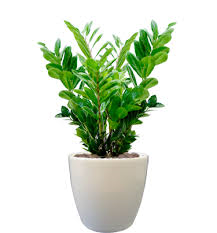
The Zanzibar is a hardy and formidable indoor plant! Often that little tag stuck in its soil or on its pot claims it ‘THRIVES ON NEGLECT’ and that’s no joke! The Zanzibar is super easy to care for. It tolerates lower light areas really well (obviously it still prefers light filled spaces and will thrive in one, but it won’t suddenly die in lower light spots either). The Zanzibar is happy with a watering roughly every two weeks in the warmer months and can go up to a month in the cooler months without a drink. Just about the ONLY thing that will indeed kill the Zanzibar, is over watering! It DOES NOT enjoy moist soil or ‘wet feet’ and will slowly die if you kill it with kindness in this way. BE WARNED! This plant literally thrives, with very little effort on your part at all! Perfect, yes?
NOTE: The Zanzibar is considered a poisonous or toxic plant and cannot be ingested by pets or humans. To that end, place up high and out of reach.
Fiddle Leaf Fig
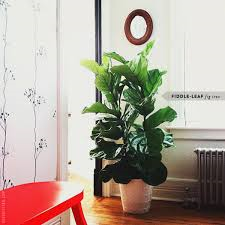
The Fiddle has been a popular designer plant over the last year or so. Renowned for its large juicy green leaves and stoic appearance, it’s a regal and commanding looking plant, sought after by the masses. But all across social media and amongst friends and family, I have heard the plaintive cry of “But the leaves are dropping” or “It’s going wrinkly and drooping”! And all confidence of well intentioned, novice plant owners around the world, is dying along with their once beautiful fiddles!
Like the Zanzibar, the fiddle leaf fig is a relatively hardy indoor plant. Most people kill it off simply by overwatering it. I call it ‘water logging’! The fiddle requires watering once every 5-7 days (ish) in the warmer months and prefers to be watered every 3-4 weeks in the cooler months. Its disposition, very much depends on the climate where you live and the spot you have for it within your home.
Fiddle leaf figs prefer bright, filtered, all-day light (not direct sunlight), they love a warm spot and they like their soil to completely dry out between watering. Those big beautiful leaves need a clean if they get dusty (just a quick wipe over with a damp cloth is sufficient). My fiddle leaf figs are juicy and thriving – they get a good watering at the plant social gathering outside and undercover once every 5-7 days. I find they enjoy staying outside where it’s nice and bright on warm days and always bring them inside where they will be warm on cooler nights. Fiddles don’t respond well to cold drafts, air conditioning or heating – so keep them well away from any vents in your home. Pop them in a bright, warm spot and generally they will do beautifully.
NOTE: The fiddle is also considered toxic or poisonous to animals or humans and as such, you need to be aware of this when introducing this plant into your home.
Pothos
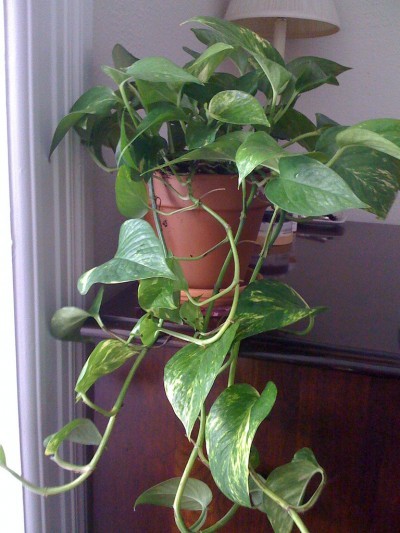
How can anyone not love a good pothos? Not only are they magnificent looking plants, but they are super easy to care for and do well in various environments within the home. Like all other indoor plants, they do beautifully in a light filled room (no direct sunlight) in this kind of environment, you will see them thrive and grow like crazy. However, the pothos is really tolerant with lower level light areas too. You won’t see it grow madly, but it won’t die off either. As a general rule, a good watering every 5-7 days is sufficient. Like all other indoor plants, keep out of any direct cold drafts, air conditioning or heating. Pothos foliage can ‘spill down’ and spiral and it looks absolutely glorious. Be creative when picking a spot for these pretties. They are superb plants!
NOTE: Pothos plants are considered toxic or poisonous to animals and humans and you should consider this when placing them in your home.
Mother In Laws Tongue
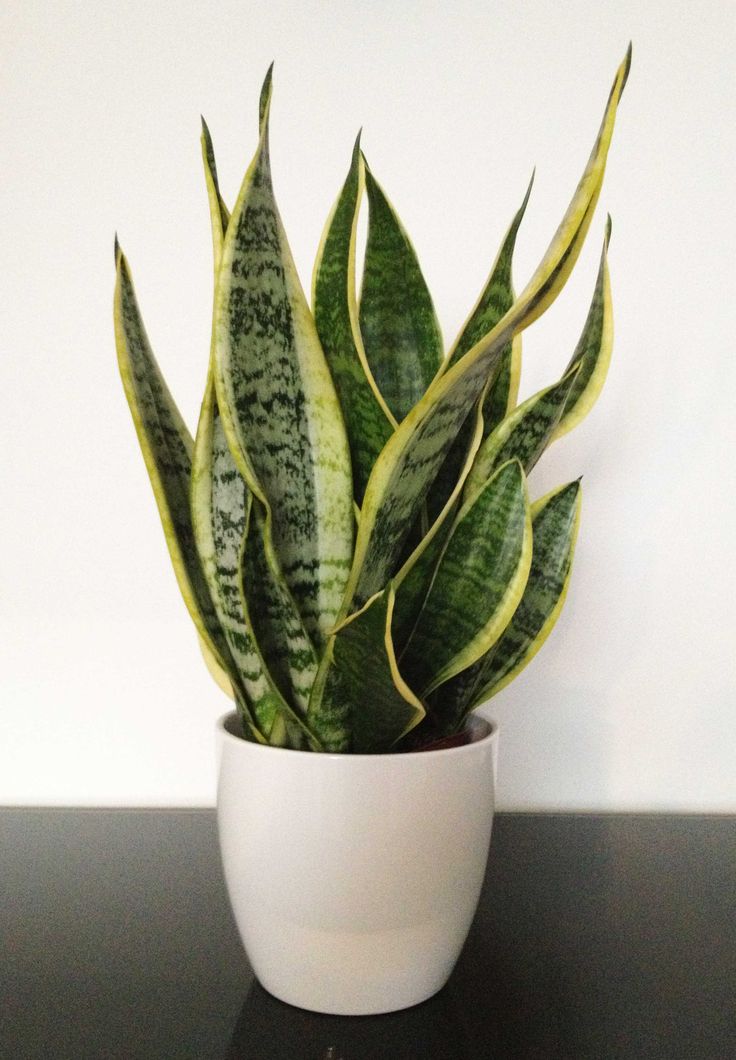
This plant is considered the holy grail for black thumbs the world over! Super easy to care for and looks fantastic within the home. This plant (also called a snake plant) does well in bright light filled rooms (no direct sunlight) and thrives on minimal attention! Like its predecessors, it doesn’t enjoy having ‘wet feet’ or moist soil – particularly if you have it in a lower light space. Whilst the MIL tongue prefers a bright, light filled spot and will thrive there, it can tolerate lower light, but like all other plants, it won’t grow as well or respond as hardily in that situation. This plant prefers its soil to dry out between watering, thus every 5-7 days in the warmer months is a decent starting point and every 3-4 weeks in the cooler months, should see it remaining quite happy.
It really is a no fuss, low maintenance plant. Over watering will kill it and lead to root rot. When you water, ensure the drink is going straight to the soil and not pooling on the sharp, upright fronds (this can lead to rotting too)
NOTE: Mother in law tongue (or snake plants) are considered poisonous or toxic when ingested and therefore this should be a consideration when introducing this plant into your home.
Monstera
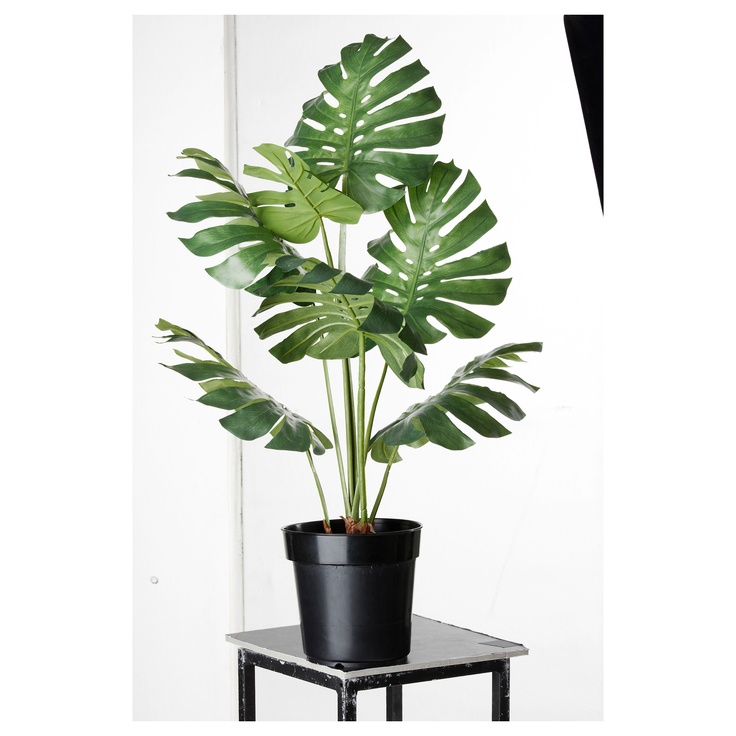
Another beautiful, luscious and commanding plant that looks glorious within the home. The monstera, like the plants mentioned before it, enjoys a bright, light filtered, warm spot. It too, prefers its soil to dry out between watering – so every 5-7 days in the warmer months is sufficient and every 3-4 weeks in the cooler months is a good starting point, this can be adjusted depending on the climate you live in. It doesn’t enjoy having moist soil, so good drainage is required for this plant. If you find the leaves on one side seem to be growing or ‘leaning’ towards the light, just turn the pot, so the other leaves get equal measures of the light too. You will find it grows more evenly when the pot is rotated every 3-4 days or so. Keep the leaves free of dust, a quick wipe with a dampened cloth is sufficient – and when watering, ensure it’s straight to the soil and not pooling on the foliage.
NOTE: The monstera is considered toxic or poisonous if ingested and this should be considered when welcoming this plant into your home.
Final Thoughts
- Remember that these plants require adequate drainage!
- Don’t be afraid of so many of them
being toxic or poisonous when ingested and please don’t let the ‘warning’ scare
you off having these plants in your home. Obviously if you have pets or little
people, you have to be aware of this – but you would be surprised, how many
plants in your garden outside are actually considered toxic or poisonous when
ingested too! Sometimes when you’re reading up on these things you wonder how
you survived your childhood at all! Ha!
The most important thing is to not deprive your home of greenery out of fear – but teach our children to live alongside these beautiful plants, to not touch or pull – and until they CAN grasp that concept, you have to be a creative parent!~
Pop your plants up high! On shelves, wall hangers, sideboards, in hanging macramé baskets, on your kitchen hutch, on top of cupboards – varieties like ivy and pothos, who have a tendency to cascade and spiral downwards, actually look really beautiful placed way up high.
I have 5 children and two dogs and we live in a bonafide jungle and everybody is still alive! Don’t allow fear to stop you from adding greenery to your home. In creative and fun ways, you can have your plants ‘out of reach’ but still on display!
Nothing says ‘home’ like a cheeky pothos, sitting on a shelf alongside a favourite cookbook, next to a frame of your kids, on top of the electricity bill! Do it!
You won’t ever regret going green.
I promise.
Jo x
